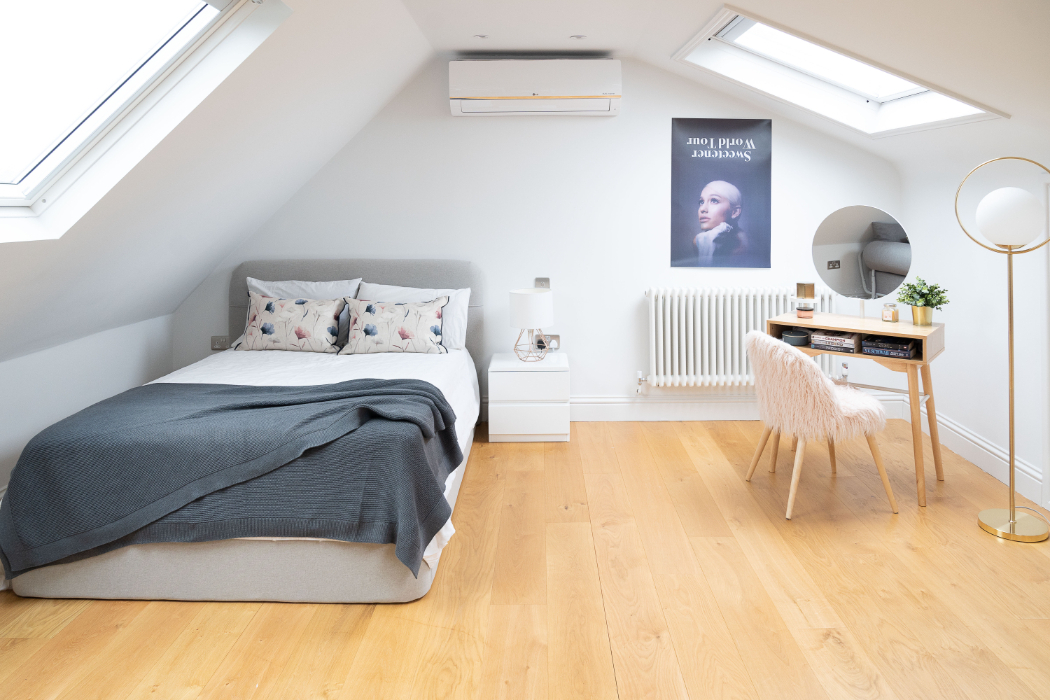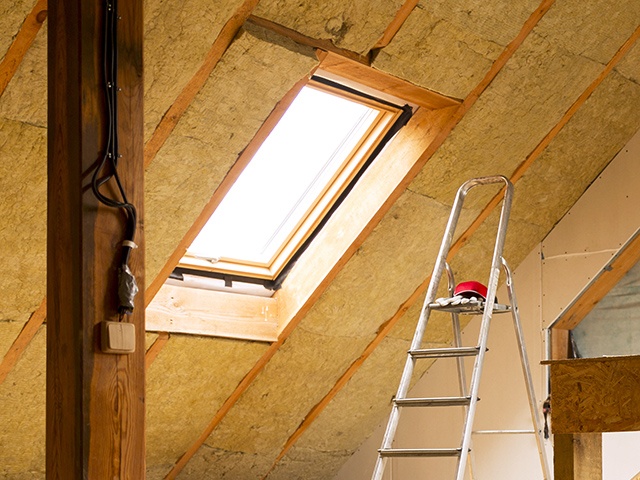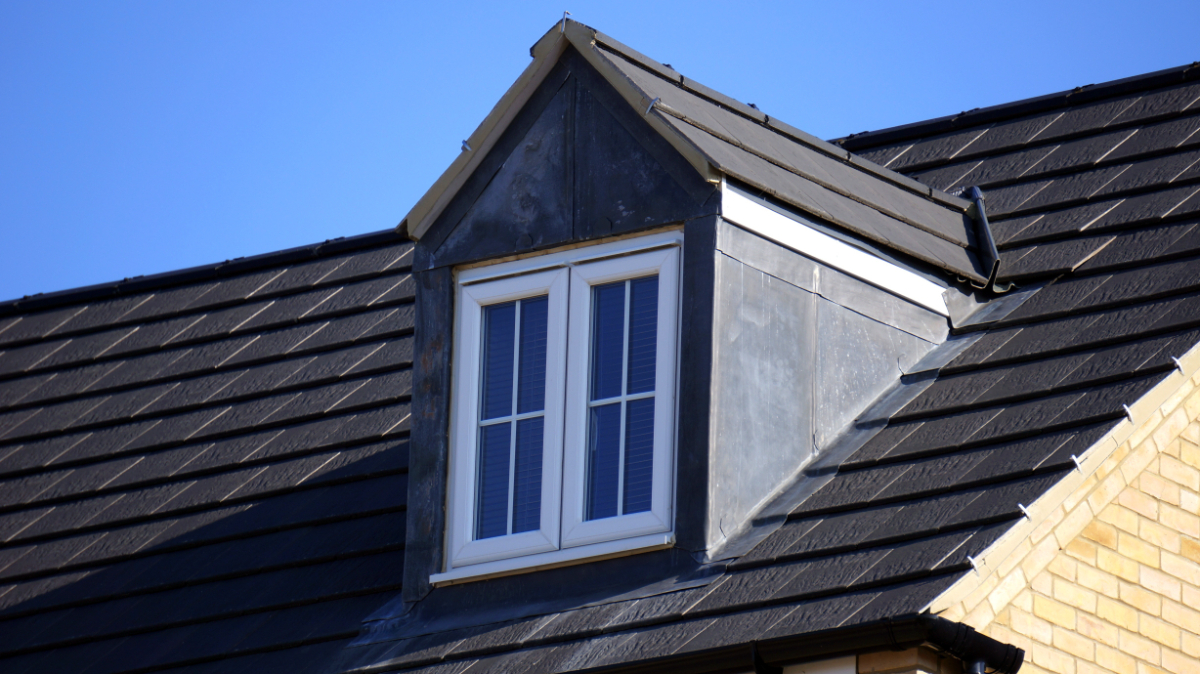Learn how to make your loft conversion energy efficient with expert insulation, smart glazing, natural light, and ventilation solutions for cosy, low-cost living.
Choosing the Right Insulation
Lofts are naturally prone to heat loss due to their position at the top of the house, where warm air tends to escape, and without the proper insulation, your new living area could become uncomfortably cold in winter, overly hot in summer, and expensive to maintain. Using the right insulation can enhance your comfort and lower your bills over time.
Rigid insulation boards, such as PIR or phenolic foam, are commonly used for sloping ceilings since they provide excellent thermal resistance while taking up a small amount of space. This is particularly beneficial for loft conversions since maximising headroom is a priority.
Mineral wool insulation, which is made from glass or rock fibres, is another popular choice for insulation. Mineral wool is cost-effective, provides good thermal and sound insulation, and it's relatively easy to install between the rafters or joists. Sheep’s wool, hemp, or wood fibre insulation are other eco-friendly choices that balance efficiency with environmental responsibility.
Energy-Efficient Windows and Glazing Options
Since lofts are located directly beneath the roof, they are exposed to outside temperatures and harsh weather conditions, and without high-quality glazing, a large amount of heat can escape in winter, while excess heat can build up in summer.

Double or triple-glazed windows form an insulating layer that separates the inside of your home from the outside. They work by trapping a layer of air or inert gas such as argon between the glass panes, which slows down the transfer of heat.
This ensures that any heat that's generated inside the home stays inside, and in summer, these windows help keep the loft cooler by reducing solar gain. As a result, the room remains comfortable all year round.
Modern glazing options have low-emissivity (low-E) coatings that reflect heat back into the room while still letting natural light enter. By maximising your light exposure while minimising your heat loss, low-E glazing provides an excellent balance of efficiency and comfort.
Maximising Natural Light
Incorporating natural light is essential for improving the energy efficiency of your loft conversion. By carefully planning your loft's design, you can create a bright, inviting space that minimises your dependence on artificial lighting.
The strategic use of roof windows, skylights, or dormer windows allows direct sunlight to enter the loft. Natural light is free, renewable, and abundant, meaning that the more effectively it's used, the less need there is to keep the lights switched on throughout the day.
Energy-efficient windows with double or triple glazing and low-emissivity (low-E) coatings ensure that heat from the sun is retained within the loft, while preventing the loft from overheating during summer. This means your loft can be comfortable all year round without over-relying on heating or cooling systems. Design features such as light wells, reflective surfaces, and bright finishes on the walls and ceilings can also amplify your natural light, which can make the loft feel more spacious and inviting.
Improving Ventilation and Airflow
Ventilation and airflow are often overlooked when planning a loft conversion, yet they are crucial to making the space energy efficient and comfortable.
Since lofts are directly beneath the roof, they are more prone to issues such as overheating in summer, heat loss in winter, and moisture build-up throughout the year. By improving the loft's ventilation, you can create a healthier environment and also reduce the need for excessive heating or cooling.

One key advantage of proper ventilation is its ability to regulate temperature. During hot weather, effective airflow helps keep the loft cool and prevents it from overheating.
On the other hand, in winter, good ventilation helps distribute the warm air evenly and ensures that no pockets of cold air remain trapped. This balance keeps the space comfortable all year round and lowers your energy demands.
Poor airflow can cause condensation, which can damage your insulation, weaken the loft's structural elements, and create an environment where mould and mildew thrive.
By incorporating features such as trickle vents, breathable membranes, or mechanical ventilation systems, you can keep your humidity levels under control and protect both your loft and your health.
Our loft conversion services can transform your unused loft space into a bright, functional room that's tailored to your needs. From expert designs and insulation to energy-efficient windows and ventilation, we make sure to deliver stylish, practical, and sustainable loft conversions that add comfort, value, and efficiency to your home.


